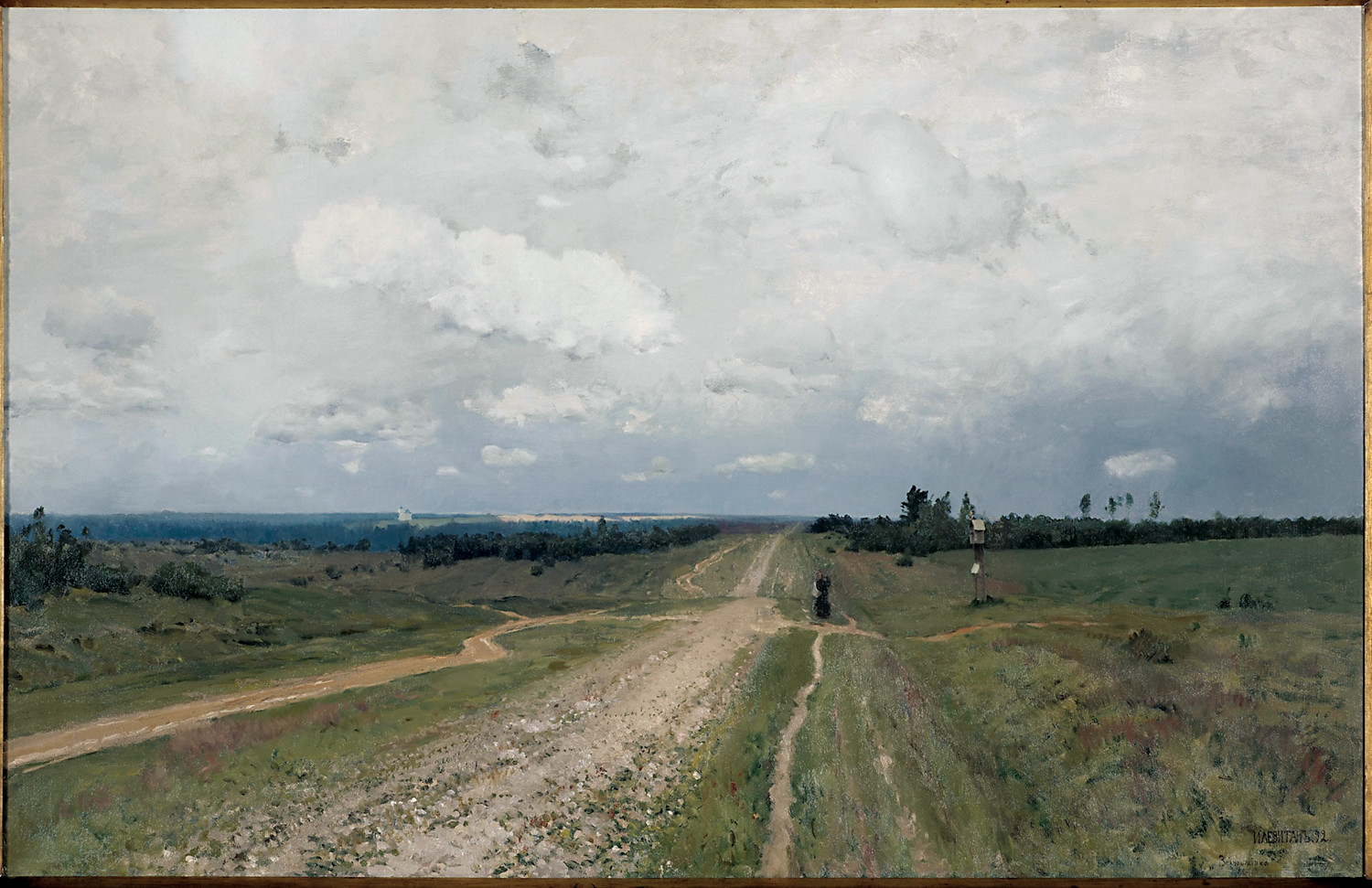The association between affective illness and artistic creativity is well known to artists themselves and is manifested in their works (
1–
3). There is an intimate connection between the artist’s inner world, his feelings of depression, despair, or happiness, and his paintings. This relationship is clearly seen in the works of the Russian painter Isaak Levitan (1860–1900), who has been called the father of Russian landscape painting. He suffered from depression, twice attempted suicide, and died at age 40 from serious heart disease.
It is no coincidence that Levitan's works are usually associated with a melancholic mood. He was the founder of “the mood landscape,” in which the landscape is richly imbued with poetic associations. Levitan viewed landscapes not as “a beautiful combination of lines and subjects” exclusively depicting beautiful places, but rather “those intimate, deeply touching, often sad lines which are so strongly felt in our native landscape and so irresistibly affect the soul” (
4).
There are few documents left regarding Levitan's life. His personal archives, including his correspondence, were destroyed by his own orders shortly before the artist's death. Isaak Levitan was born in the village of Wirballen, now in Lithuania, to a poor but well-educated Jewish family. In September 1873, he entered the Moscow School of Painting, Sculpture, and Architecture. In 1877, Levitan's works were first publicly exhibited, garnering a favorable reception. Levitan deeply felt both the lyrical charm and the quiet greatness of Russian nature (
5). Throughout his life, the artist suffered from valvular heart disease and aneurysm. Moreover, from an early age he was prone to mood swings. He suffered from attacks of melancholy. Typically, his periods of depression were not prolonged, lasting about 3 weeks. After they ended his mood would change, becoming energetic and cheerful, whereas while he was depressed, Levitan avoided friends and any social contact and thought everyone was against him. He became rude, insolent, and intolerant and even angrily destroyed his paintings by scraping the paint. In one of his letters to Anton Chekhov, Levitan wrote, “Do not wait for me. I'm not coming because I am in a state where I cannot see people. Do not come because I am alone. I am nobody and nothing.” In April 1885, Levitan attempted suicide by shooting himself, and Chekhov helped him return to his usual self (
5). In 1895, Levitan once again attempted suicide. In July 1895, he wrote to Chekhov, “Melancholy reached me before I shot myself, but I am still alive.” In 1896, Levitan fell ill with typhoid fever and his physical condition deteriorated. The typhoid brought a worsening in his heart condition. In March 1897, Chekhov wrote, “I examined Levitan. His condition is very poor. His heart was not beating properly, but blowing. Instead of tuk-tuk, I heard pf-tuk....” In another letter: “The artist Levitan apparently soon will die, he suffers from an enlargement of the aorta.” In 1900, Levitan died. During his brief life, the artist created about a thousand paintings, sketches, and drawings.
Vladimirka Road, shown in this painting, is the infamous road to Siberia, the road for transporting prisoners. Levitan often combined his realistic vision with a strong message. In this case, the desolation of the landscape echoes the message conveyed by the Vladimirka Road, the route taken by those exiled to Siberia. Levitan was probably hinting at his own exile, which occurred during the same period. Like many others, he was evicted from Moscow because he was Jewish, and this experience had a profound impact on Levitan (
5). The sky and the fields are all part of the symbolic message that Levitan wanted to convey. The colors are dull and rather lifeless. Levitan chose to use browns and dull greens so that nothing would stand out; the sky is blue-gray, cloudy, and unforgiving. There is no sun peeking out from behind the clouds, as if the painter wanted to say that there is little hope for those who take that road. The landscape is flat and with the exception of the trees in the background, has no other vegetation except some sparse yellowish grass. The road appears to have no end. Perhaps Levitan is trying to show that the prisoners are forever itinerants or that Russia is so vast that human beings “vanish” in its unlimited space. Human presence is reduced to a minimum. Only a lonely figure of a wanderer near the roadside can be seen. This tendency to “dehumanize” compositions by excluding human figures was a recurrent feature in Levitan's works.


